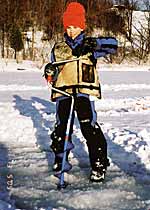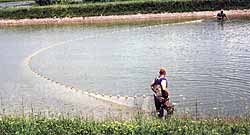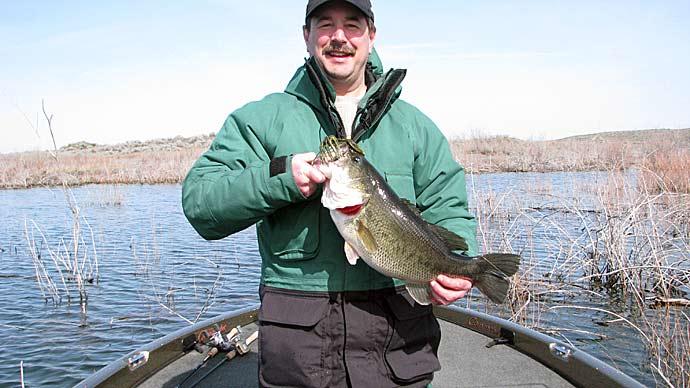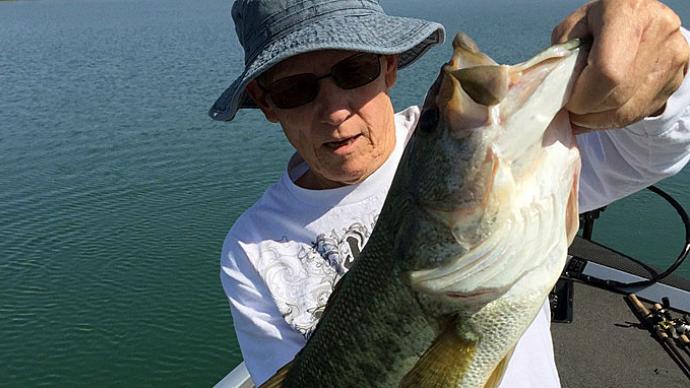
How often do you hear that little catch phrase, "outside the box"? I think about that concept often. As a paid fisheries consultant, part of my challenge is to solve problems that other biologists may have already attempted to clear up. A classic example of that was when I was challenged in upstate New York to grow double-digit largemouth bass. The landowner, who was always up to offering challenges, told me he wanted to grow the biggest largemouth bass possible.
He asked me if we could grow bass beyond eight pounds. I said, "Absolutely." He smiled and said, "What about double-digits?" I said, "If anyone can do it, you and I can!"
Little did he know I was sweating a bit.
Double-digit largemouth bass...in upstate New York?
They have this little thing there called "winter."
Largemouth bass and winter don't jive too well.
So, as I scratched my head and thought about this project, an obvious question rattled around inside my smoldering brain. "What's the box?"

I called a meeting. Brought in every local fisheries biologist, fisheries professor, and fish producer we could find within 200 miles. We sat around a table and I asked them lots and lots of questions. Here's what I found out from these local experts.
- The growing season is too short for largemouth bass.
- Bass only grow to 6-6.5 pounds there.
- Bluegill are a nuisance in that part of the country, because they spawn once, late, and grow too fast to be a good forage fish.
- A 12 inch bass is 5 or 6 years old.
- They have this thing called "winterkill" under the ice, usually every third or fourth winter.
- We can't bring Florida genetics to New York because of the extreme cold and the fact they are "exotic" to the state.
As I thought about it, those statements helped define "the box." If I, and the team I was assembling, were to succeed, we had to get "out of the box" of this thinking.

So, I did some homework. What's a "growing season" for largemouth bass? The perfect day for growing bass is where the water temperature sits between 53-83 degrees, F. In the south, we have about 125-130 "perfect" bass growing days, scattered over a 300 day period. In the north, guess how many "perfect" bass growing days there are? Pretty much the same number, but they are all bunched together, in a row! So, toss number one out the window. What about number 2? Bass growth is relative to their growing season and how much they have to eat...and to some degree, their genetics. So, since number 1 is false and assuming number 2 is true, the reason for small bass must be something other than the growing season. What about number 3? Bluegill are considered the backbone of the food chain in the south because they reproduce often, throughout the spring, summer, and well into fall. Some winters even yield a spawn, when four or five days of bluebird weather in February gives those panfish a quick rise in temperatures. So, what are good bluegill growing season days? They love warm and hot. In Texas, we probably have 280-340 great bluegill growing days...thus the multiple spawns and many Age-0 size classes... perfect for bass food. In upstate New York, they have a grand total of 75 perfect bluegill days, mainly because the creatures don't even spawn until July. It takes most of spring and part of summer for them to develop their eggs to the point of being able to spawn.
Aha! An epiphany! The bass weren't really the problem. They needed food and probably a shift in genetics. Those 10-12", Age-6 bass were small, mostly because they needed nourishment during their entire growing season and they weren't getting it. As a matter of fact, those pesky bluegills there mainly ended up competing with those small bass rather than being a source of food.

And, let's not forget that little "winterkill" thingy.
So, how did we get "outside the box" with this project? First, we recognized that the growing season for bass wasn't the issue. However, food production was a big issue. With the threat of winterkill, we also had to think about water quality. We focused on feeding fish and moving the water to cleanse it. We used small ponds on the preserve as hatchery ponds. We raised small bluegills, fathead minnows, and white suckers. We also promoted the hatching and growth of yellow perch as a forage species. With a reasonable budget and some creative thinking, we were able to get some bass beyond eight pounds in the second year - about the time my contract expired and we had a management team in place.

Here's my point. All of us tend to become stuck in a "box." Figure out what your box is and think of ways to get out of it. If you want your pond or lake and its inhabitants to grow and thrive, part of your mission is to identify the constraints and then use some creative (or traditional) methods and systems to go to the next level.
Think about your water. Have it analyzed regularly. Study your fish. Understand your plant life. At some point, you'll see how all these elements come together to create that dynamic underwater ecosystem that thrives (or not) on your property.
Let me challenge you to untie the pretty bow around that box you call your pond (and your brain) and figure out how to go to the next level.
Reprinted with permission from Pond Boss Magazine



